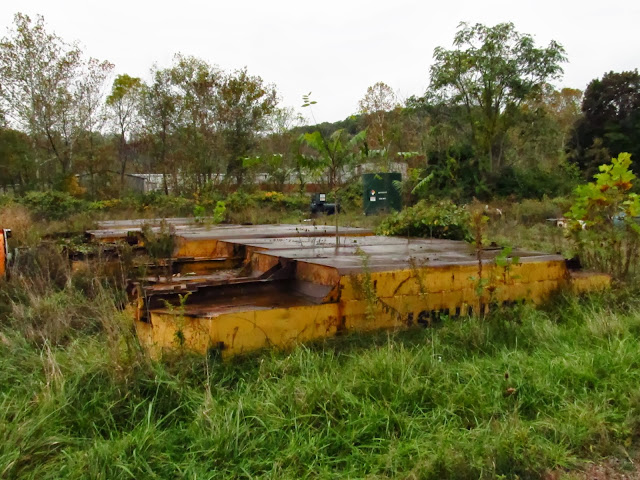The Republic Mine and Coke Works were a captive operation of the Republic Iron and Steel Company of Youngstown, Ohio. Republic Iron and Steel, founded in 1899, became Republic Steel in 1930 and was once the third largest steel corporation in the United States. In 1984 Republic merged with J&L to form LTV Steel which filed for bankruptcy in 2001.
The mine and coke works in Republic, PA were opened between 1903 and 1905. By 1905 there were 400 ovens burning. By 1930 the ovens had been shut down. All the coke produced here was shipped to Republic Iron and Steel's mills.
These ovens are in mostly horrible condition. One thing I noticed was that they seemed much larger than other ovens I've found. Two of the ovens here are completely intact while the others are completely dilapidated.
 |
| These ovens are actually in better shape than the majority at Republic. |
 |
| After walking past all the fallen down ovens I came across these two. |
 |
| Somebody dug through the two ovens making a tunnel linking them. The already large ovens became quite spacious when they were joined together. |
 |
| A little bit of remaining block wall. |
 |
| Some remaining hardware at the farther end of the row. |




























































